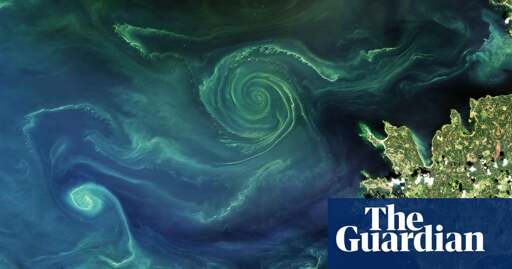In 2023, the hottest year ever recorded, preliminary findings by an international team of researchers show the amount of carbon absorbed by land has temporarily collapsed. The final result was that forest, plants and soil – as a net category – absorbed almost no carbon.
There are warning signs at sea, too. Greenland’s glaciers and Arctic ice sheets are melting faster than expected, which is disrupting the Gulf Stream ocean current and slows the rate at which oceans absorb carbon. For the algae-eating zooplankton, melting sea ice is exposing them to more sunlight – a shift scientists say could keep them in the depths for longer, disrupting the vertical migration that stores carbon on the ocean floor.
“None of these models have factored in losses like extreme factors which have been observed, such as the wildfires in Canada last year that amounted to six months of US fossil emissions. Two years before, we wrote a paper that found that Siberia also lost the same amount of carbon,” says Ciais.
“Another process which is absent from the climate models is the basic fact that trees die from drought. This is observed and none of the models have drought-induced mortality in their representation of the land sink,” he says. “The fact that the models are lacking these factors probably makes them too optimistic.”
In Australia, huge soil carbon losses from extreme heat and drought in the vast interior – known as rangelands – are likely to push its climate target out of reach if emissions continue to rise, a study this year found. In Europe, France, Germany, the Czech Republic and Sweden have all experienced significant declines in the amount of carbon absorbed by land, driven by climate-related bark beetle outbreaks, drought and increased tree mortality.



Someone besides me should print the entirety of Wikipedia and laminate it. People in the future need to know.